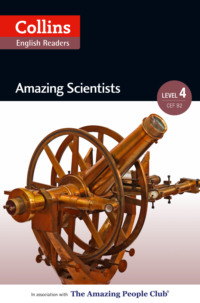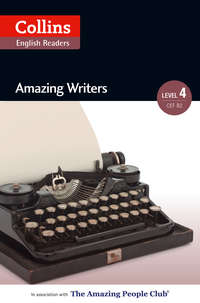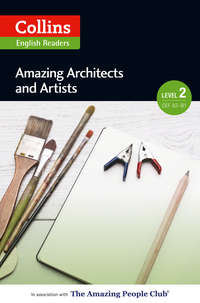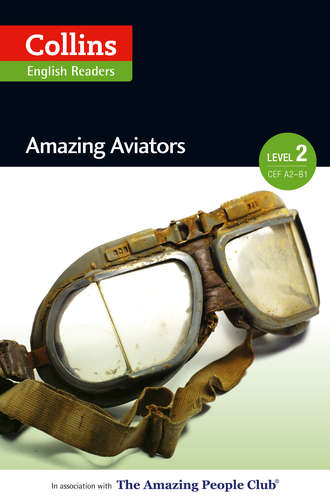
Полная версия
Amazing Aviators: A2-B1

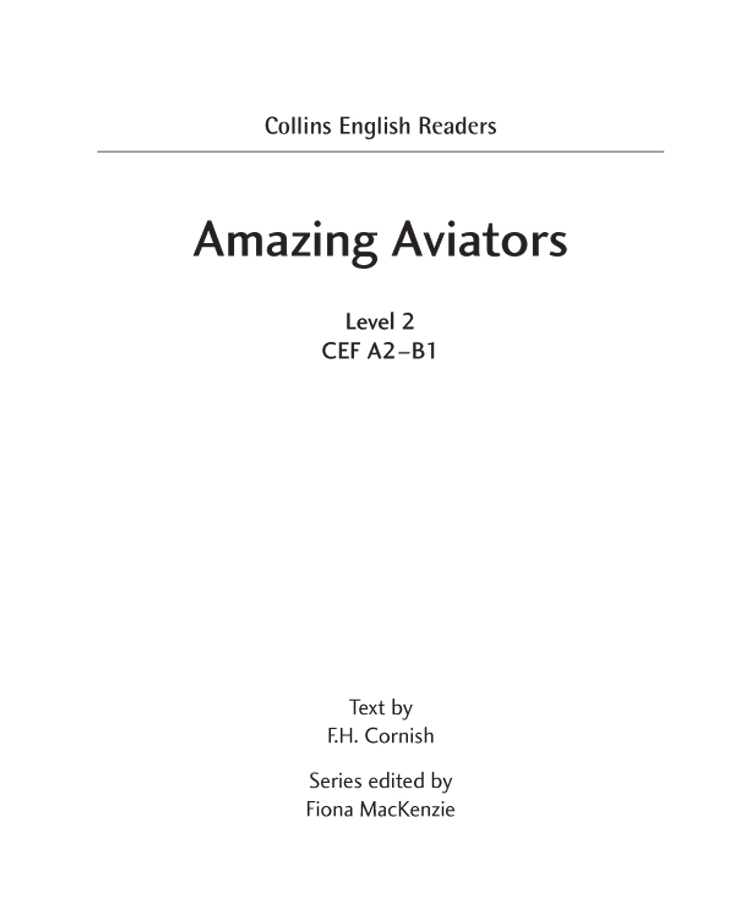


Cover
Title Page
Introduction
The Grading Scheme
Joseph-Michel Montgolfier
Louis Blériot
Charles Lindbergh
Amelia Earhart
Amy Johnson
Glossary
Keep Reading
Copyright
About the Publisher


Collins Amazing People Readers are collections of short stories. Each book presents the life story of five or six people whose lives and achievements have made a difference to our world today. The stories are carefully graded to ensure that you, the reader, will both enjoy and benefit from your reading experience.
You can choose to enjoy the book from start to finish or to dip in to your favourite story straight away. Each story is entirely independent.
After every story a short timeline brings together the most important events in each person’s life into one short report. The timeline is a useful tool for revision purposes.
Words which are above the required reading level are underlined the first time they appear in each story. All underlined words are defined in the glossary at the back of the book. Levels 1 and 2 take their definitions from the Collins COBUILD Essential English Dictionary and levels 3 and 4 from the Collins COBUILD Advanced English Dictionary.
To support both teachers and learners, additional materials are available online at www.collinselt.com/readers.
The Amazing People Club®
Collins Amazing People Readers are adaptations of original texts published by The Amazing People Club. The Amazing People Club is an educational publishing house. It was founded in 2006 by educational psychologist and management leader Dr Charles Margerison and publishes books, eBooks, audio books, iBooks and video content which bring readers ‘face to face’ with many of the world’s most inspiring and influential characters from the fields of art, science, music, politics, medicine and business.


The Collins COBUILD Grading Scheme has been created using the most up-to-date language usage information available today. Each level is guided by a brand new comprehensive grammar and vocabulary framework, ensuring that the series will perfectly match readers’ abilities.
CEF band Pages Word count Headwords Level 1 elementary A2 64 5,000–8,000 approx. 700 Level 2 pre-intermediate A2–B1 80 8,000–11,000 approx. 900 Level 3 intermediate B1 96 11,000–15,000 approx. 1,100 Level 4 upper intermediate B2 112 15,000–18,000 approx. 1,700For more information on the Collins COBUILD Grading Scheme, including a full list of the grammar structures found at each level, go to www.collinselt.com/readers/gradingscheme.
Also available online: Make sure that you are reading at the right level by checking your level on our website (www.collinselt.com/readers/levelcheck).
Joseph-Michel Montgolfier

1740–1810
the man who helped humans to fly
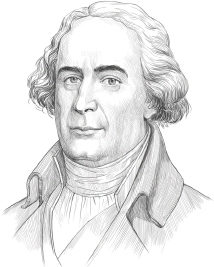
All my life, I was an inventor. I designed the first hot-air balloons. My brother Étienne and I made it possible for humans to fly through the air.

I was born on 26th August 1740, in Annonay, in the Ardèche region of central France. My father, Pierre, owned a company which made paper in the town. My mother, Anne, gave Pierre 16 children, and I was the twelfth of them. When I was young, I was especially close to my brother, Jacques-Étienne. Étienne – we all called him that – was the fifteenth child. He was five years younger than me, but we were interested in the same things. In later years we worked together.
When we were children, Étienne and I often watched birds flying. ‘Perhaps people could learn to fly too,’ I sometimes thought. I had the mind of an inventor at an early age, and people called me a dreamer. I certainly dreamed about flying. Étienne’s mind was more practical than mine. While most of us stayed in Annonay, he moved to Paris. There, he studied to become an architect. However, he returned to us in 1772 when our eldest brother, Raymond, died. Raymond had been the manager of the family’s paper-making business, after my father’s retirement. Now Étienne took that job.
Étienne was a very successful businessman, and as a result, our family became rich. But my interest in inventing things was strong. Many people thought that my ideas were strange, but I didn’t listen to them. Fortunately, Étienne didn’t listen to them either.
In 1777, I had my first practical idea about human flight. One day, I was drying some cloth over a fire. I noticed that the cloth was moving. The hot air from the fire was lifting parts of it. I knew then that hot air was lighter than cold air, so I asked myself a question. Could hot air inside something that was heavier than air lift that thing off the ground? It was an idea that stayed in my mind.
In 1782, I was living in Avignon. I was interested in military planning at that time. I started to think about flying soldiers. Why was the idea of flying soldiers a good one? There were several reasons. For example, a soldier could fly over a battlefield. He could look down and see where his enemy’s soldiers were. That could help his own army. Or perhaps the soldiers themselves could attack their enemy from the air.
I remembered my idea about using hot air to make something fly, and I shared it with my brother. We agreed that the main difficulty was the fire. The air inside a flying machine had to be hot. It had to be lighter than the air around the machine. So we needed to make something which could fly, but which contained a fire. The fire had to burn safely. We didn’t want it to burn the machine.
I started to make experiments. One day, I made a wooden frame with the shape of a box. It was about one metre by one metre by one metre in size. I covered the frame with cloth on five sides, but I didn’t cover the bottom of the box. I placed the box on a metal stand and I made a fire under it.
My experiment was a success. The box – the balloon, as I called it – started to rise from the ground. Was this a kind of flying machine? Yes it was! I was indoors at that time, so the machine soon hit the ceiling, but I saw that my idea was practical. It was time to build a larger machine and take it outside.
I wrote to my brother. I asked him to get lots more cloth and some rope. He quickly did this, and he came to Avignon and joined me in my work. I told him that he was going to see something amazing.
On 4th December 1782, our first outdoor balloon was ready. It was a very basic balloon, about three times as large as the first one. No one could fly in that balloon. I wanted to demonstrate to people what could be done in the future. A large crowd came to see what was going to happen. Amazingly, the balloon ascended, and floated through the air for nearly two kilometres.
The next year, 1783, was the most important time for our work. We made a new balloon, which was larger than the second one. It had thick paper inside the cloth. This balloon held 790 cubic metres of air, and it weighed 225 kilograms. On 4th June that year, we gave a public demonstration of this balloon at Annonay. People from the government came to watch. ‘Will the balloon leave the ground?’ everyone wondered. We were happy when the demonstration succeeded. The flight lasted ten minutes, and the balloon reached an altitude of about 2000 metres above the ground. Like the second balloon, it landed about two kilometres from where it left the ground.
So, a machine could fly! We already knew that, but most of the people at the demonstration were amazed. News of our success moved faster than the balloon travelled. Soon, Étienne went to Paris to demonstrate our invention there. I was always a shy person and I decided to stay at home.

11th September was the date of Étienne’s first demonstration in the French capital city. Jean-Baptiste Réveillon, another man whose company made and sold paper, helped my brother to make the new balloon. The flight started in Reveillon’s garden. This balloon had a name – it was called Aérostat Réveillon. The signs of the zodiac were painted on it. Everyone thought that it looked wonderful.
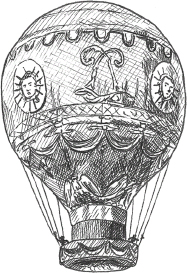
On that occasion, the king, Louis the Sixteenth, had told Étienne that two criminals could fly in the basket – the compartment for passengers at the bottom of the balloon. We wanted to test the effects of flight on living things, because we wanted our balloons to carry men and women in the future. But Étienne said that criminals didn’t deserve the honour.
However, a week after that flight, another flight took place at the Royal Palace in Versailles. This time, a sheep, a duck and a chicken were in the basket. The date was 19th September, and a huge crowd came to watch the flight. King Louis and Queen Marie-Antoinette themselves were there, and again the flight was successful. This time, the balloon travelled about three kilometres in eight minutes. It flew at about 500 metres above the ground. None of the animals was hurt.
Immediately, Étienne built a huge new balloon which held 1,700 cubic metres of air. It was about 24 metres high, and about 16 metres wide. The king’s face, as well as the zodiac signs, was painted on this balloon. On 15th October, in this balloon, my brother became the first human to ascend into the air. It was a tethered flight – the balloon was tied to the ground with a very long rope. This was because we still needed a way to control the balloon’s direction of flight.
Later that same day, another man ascended in the machine. He was called Jean-François Pilâtre de Rozier, and after that day he flew in Étienne’s balloons on a number of occasions.
Soon, Étienne decided that the tether-rope wasn’t necessary. The balloon could fly untethered in future. On 21st November, the marquis d’Arlandes – who was a famous soldier – and monsieur Pilâtre de Rozier made the first untethered flight. Monsieur de Rozier controlled the balloon’s direction on that day. So you could say that he was the world’s first pilot! The two men flew over Paris. They reached an altitude of 900 metres and they stayed in the air for 25 minutes. Parisians were amazed to see the balloon sailing across the sky.
That flight had a moment of danger. A piece of hot wood jumped from the fire and started to burn the cloth. The pilot had to land the balloon quickly. But no one was hurt and everyone was happy that the two aviators had returned safely to Earth.

Much more work was needed to improve the balloons. Étienne and I made many more experiments. The Académie des Sciences recognized our achievements. However, our work was interrupted by the French Revolution.
In 1789, the streets of Paris were dangerous places, especially for the rich people. Survival in the streets became more important than survival in the air, so we stopped flying. But we’d shown that human flight was possible. We’d changed the way people thought about travel.
Soon after our machines first flew, other inventors started to make balloons which were filled with hydrogen, not hot air. Hydrogen, a gas which had recently been discovered, was lighter than air. It didn’t need to be heated. But balloons continued to be people’s only way of flying, long after my own death on 26th June 1810. It was almost a hundred years later when a different kind of flying machine moved the history of aviation forward again.
The Life of Joseph Montgolfier
1740 Joseph-Michel Montgolfier was born in Annonay, Ardèche, France. He was the twelfth child of 16 born to his parents. The Montgolfier family were paper-makers. 1745 Joseph’s brother Jacques-Étienne (always called Étienne) was born. 1760 Joseph completed his education and began to work in the family’s paper-making business. 1772 Étienne, Joseph’s brother, returned from Paris where he had studied architecture. He managed the family business after the death of their older brother. 1777 Joseph began to talk about ideas for a flying machine with Étienne. He thought that a machine could fly with the help of hot air. 1782 While living in Avignon, Joseph began building the first hot-air balloon. When his brother joined him in the work, they built a larger balloon which flew two kilometres. 1783 In Annonay the brothers made the first public demonstration of their hot-air balloon. The flight was a success and the balloon flew two kilometres in ten minutes. Next, they made another hot-air balloon called the Aérostat Réveillon. Its first flight was successful and soon there was another demonstration at the Royal Palace of Versailles. King Louis XVI and Queen Marie-Antoinette watched as the balloon ascended. A month later, Étienne made the first successful human flight in a tethered balloon. 1789–1799 The French Revolution ended the Montgolfier brothers’ work on balloons for several years. Joseph and Étienne returned to the family paper-making business. But after the Revolution they continued their work on inventions. Soon, hot-air balloons were replaced by hydrogen balloons. But Joseph invented several important machines of other kinds. 1810 Joseph died aged 69, in Balaruc-les-Bains.Louis Blériot

1872–1936
the first person to cross the sea in an aeroplane
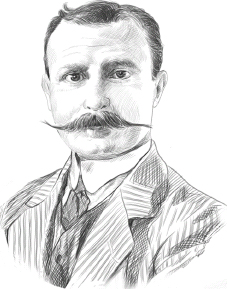
I was the first person to cross the sea from France to England in a heavier-than-air flying machine.

I was born in the town of Cambrai, in France, on 1st July 1872. I went to school in my home town, then in Amiens, and finally in Paris. As a boy, I was especially good at drawing. My ambition was to become an engineer.
When I left the famous École Centrale in Paris, I had to join the French Army. All young men had to do some military service at that time, and I was a soldier for a year. After that, I took a job with an engineering company in Paris. While I was working there, I invented something new. It was a practical kind of headlamp for the first cars which were appearing in France at that time.
Конец ознакомительного фрагмента.
Текст предоставлен ООО «ЛитРес».
Прочитайте эту книгу целиком, купив полную легальную версию на ЛитРес.
Безопасно оплатить книгу можно банковской картой Visa, MasterCard, Maestro, со счета мобильного телефона, с платежного терминала, в салоне МТС или Связной, через PayPal, WebMoney, Яндекс.Деньги, QIWI Кошелек, бонусными картами или другим удобным Вам способом.




